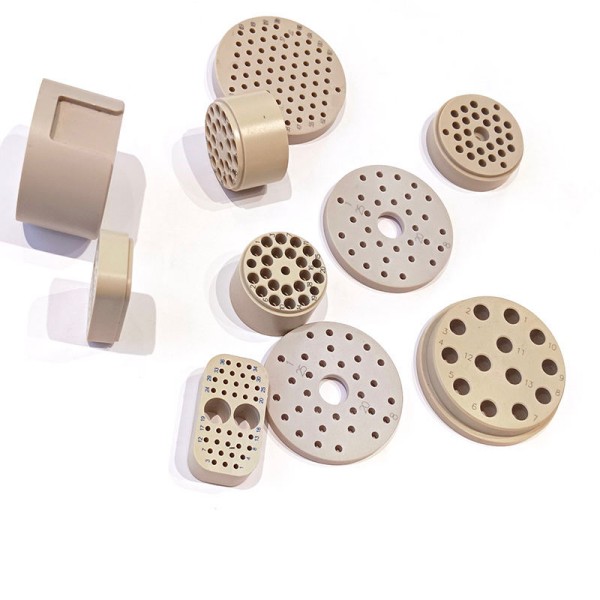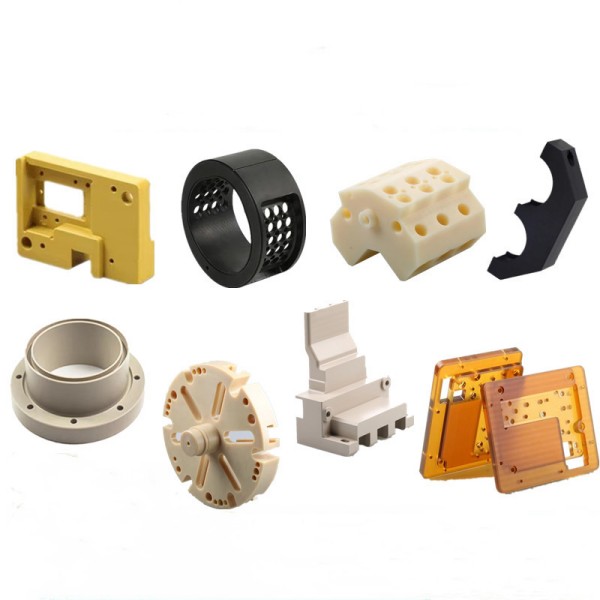ULTEM® (a brand name for PEI) is an amorphous plastic resin that is easy to thermoform or bond with adhesives and is another popular high-temperature thermoplastic. ULTEM® PEI has an atactic molecular structure, a wide softening range, a melting point of 218°C, a V-0 flame-retardant rating, and the ability to maintain its mechanical integrity and electrical properties at high temperatures. Durable PEI produces minimal fumes, is flame retardant and chemically resistant, making it an ideal material for the aerospace industry and circuit boards.
1. Includes heat transfer channels
During the injection molding process, your manufacturer will spend a considerable amount of time cooling your parts before demolding and heating your molds before injection. These processes can be accelerated by including isometric heat transfer channels in your mold design. These channels should expose each cavity to the same amount of heating or cooling fluid at the same time. This will allow your manufacturer to quickly and uniformly raise or lower the temperature of the mold.
2. Use Thermal Pins
If it is not possible to include heat transfer channels in certain parts of the mold due to extensions or protrusions, thermal pins can be used. With their high thermal conductivity, these pins can quickly transfer heat from any previously inaccessible areas to the heat transfer channels of the mold. Hot pins will optimize the internal temperature of the mold without disrupting coolant pressure.
Thermal pins contain fluid that is sealed inside the cylinder. As the fluid absorbs heat from the mold, it evaporates and condenses as it releases heat to the coolant. With heat transfer efficiencies nearly 10 times greater than copper and copper alloy steel inserts, hot pins are an excellent choice when you have complex molds. Just be sure to avoid any air gaps between the hot pins and the mold, or fill them with a highly conductive sealant.
3. Choose the right mold material
The material of the mold affects the final product and also the design of the mold. You need to find a high-temperature mold material that strikes a balance between processability, cost, and wear resistance. After all, you want the mold to last for several runs, but you don't want it to take too much time or money to create. If you're planning on high-volume production, consider using a high-strength steel like H-13, S-7, or P20. If you're making prototypes, aluminum is a cost-effective material for tooling.

Special engineering plastic parts processing_Focus on shaped non-standard parts mold injection molding
Compared with traditional metal materials, special engineering plastics have good dimensional stability, its excellent processing technology, not only can more quickly change the appearance of the product structure, to avoid secondary processing of the product, but also to meet the dimensional tolerances of the product parts and appearance requirements.
Processable special engineering plastics such as: PEEK,
PPS, PEI, PSU,
PPSU, etc., generally have high temperature resistance, corrosion resistance, high strength and other characteristics.

Polyether ether ketone (PEEK) injection molding process and its applications:
Because PEEK high temperature resistance, excellent wear resistance, good mechanical properties, the earliest was used in the field of aviation, instead of metal materials to manufacture the internal structure of the aircraft. After also be used as automotive bearings and other parts: valve seats, valves, pumps, piston rings; excellent electrical properties also allow PEEK can be applied to love wafer carrier; and PEEK's excellent chemical stability and corrosion resistance can be used in the field of medical equipment.
Typically, PEEK molding temperature of 300 ℃ ~ 340 ℃, mold design, you can use the high light and polishing and other ways, over again in the molding process next time to affect the quality of the product, the injection molding machine molding pressure needs to be adjusted to the ratio of pressure and speed to ensure that the size and quality of the product to meet the requirements.
PPS has excellent heat resistance, flame retardancy, excellent electrical properties, melt flow and other characteristics, PPS is suitable for automotive injection molding parts: automotive three electric system motor module parts, electronic control module parts, battery module parts. In response to the trend of automobile lightweighting, hundreds of parts are applied from the exterior functional parts to the interior structural parts of automobiles.
In order to obtain good product appearance, PPS injection molding process should be high-speed injection, in order to maintain stable metering, it is recommended that the back pressure is set to 2 ~ 5MPa, metering instability can be set to 8 ~ 10MPa, strict control of the processing temperature and time, to avoid excessive high or low temperature negative impact on the performance of the PPS material.










